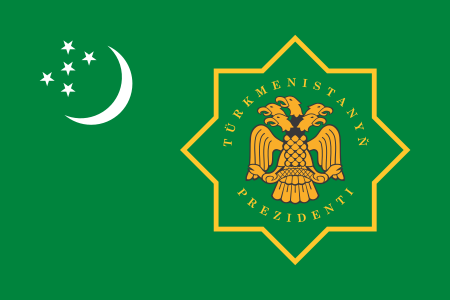Ludger
| |||||||||||||||||||
Read other articles:

Machmud Singgirei RumagesanRaja al-Alam Ugar Pik-Pik SekarLukisan Machmud Singgirei RumagesanBerkuasa1915PendahuluRaja Kabituwar: Pandai/Congan Raja Sekar: Saban Pipi RumagesanPenerusAmir Syahdan Rumagesan[1]Kelahiran(1885-12-27)27 Desember 1885Kokas, Afdeling FakfakKematian5 Juli 1964(1964-07-05) (umur 78)Jakarta, IndonesiaPemakamanTaman Makam Pahlawan Kokas, Kabupaten FakfakWangsaRumagesanAyahSaban Pipi RumagesanPasanganNoen, Putri Laha Janiba, Putri Kesultanan Gowa[2]Anak…

Participants in an online music scene who rearrange spliced parts of musical pieces form mashup culture. The audio-files are normally in MP3 format and spliced with audio-editing software online. The new, edited song is called mashup.[1] The expression mashup culture is also strongly connected to mashup in music. Even though it was not originally a political community, the production of mash-up music is related to the issue of copyright. Mashup Culture is even regarded as a response to l…

Play written by Ben Travers Aldwych company in Thark (1927). From left: Mary Brough, Ralph Lynn, Winifred Shotter, Robertson Hare, Tom Walls, Ethel Coleridge and Gordon James Thark is a farce by the English playwright Ben Travers. It was first given at the Aldwych Theatre, London, the fourth in the series of twelve Aldwych farces presented at the theatre by the actor-manager Tom Walls between 1923 and 1933. It starred the same cast members as many of the other Aldwych farces. The story concerns …

Сельское поселение России (МО 2-го уровня)Новотитаровское сельское поселение Флаг[d] Герб 45°14′09″ с. ш. 38°58′16″ в. д.HGЯO Страна Россия Субъект РФ Краснодарский край Район Динской Включает 4 населённых пункта Адм. центр Новотитаровская Глава сельского посел…

土库曼斯坦总统土库曼斯坦国徽土库曼斯坦总统旗現任谢尔达尔·别尔德穆哈梅多夫自2022年3月19日官邸阿什哈巴德总统府(Oguzkhan Presidential Palace)機關所在地阿什哈巴德任命者直接选举任期7年,可连选连任首任萨帕尔穆拉特·尼亚佐夫设立1991年10月27日 土库曼斯坦土库曼斯坦政府与政治 国家政府 土库曼斯坦宪法 国旗 国徽 国歌 立法機關(英语:National Council of Turkmenistan) 土�…
Genus of algae Nannochloropsis Nannochloropsis viewed under a light microscope Scientific classification Domain: Eukaryota Clade: Diaphoretickes Clade: SAR Clade: Stramenopiles Phylum: Gyrista Subphylum: Ochrophytina Class: Eustigmatophyceae Order: Eustigmatales Family: Monodopsidaceae Genus: NannochloropsisD.J.Hibberd, 1981[1] Type species Nannochloropsis oculata(Droop 1955) Hibberd 1981 Nannochloropsis is a genus of algae comprising six known species. The genus in the current taxonomic…

「アプリケーション」はこの項目へ転送されています。英語の意味については「wikt:応用」、「wikt:application」をご覧ください。 この記事には複数の問題があります。改善やノートページでの議論にご協力ください。 出典がまったく示されていないか不十分です。内容に関する文献や情報源が必要です。(2018年4月) 古い情報を更新する必要があります。(2021年3月)出典�…

Secret Diary of a Call Girl is a British television drama broadcast on ITV2 based on the blog and books by the pseudonymous Belle de Jour, starring Billie Piper as Belle, a high-class London call girl. The series was written by Lucy Prebble, who is also known as the author of The Sugar Syndrome and ENRON. The series has been compared to Sex and the City by many critics, mainly due to its humorous approach to sex.[1][2] The third series began on 28 January 2010, on ITV2. The fourt…

كانت أزمة نزع سلاح العراق إحدى القضايا الرئيسية التي أدت إلى الغزو المتعدد الجنسيات للعراق في 20 مارس 2003. منذ الثمانينات، كان من المفترض على نطاق واسع أن العراق يقوم بإنتاج برامج الأسلحة البيولوجية والكيميائية والنووية وإدارتها على نطاق واسع. وخلال ذروة الحرب الإيرانية العر…

Austrian post code system Postal codes in Austria were introduced in 1966. known locally as 'Postleitzahlen' are a fundamental aspect of the nation's logistical infrastructure, providing a systematic means of organizing mail delivery and geographical categorization. The term 'Postleitzahlen' translates to 'postal codes' in English. Austria's postal codes typically consist of four digits, with the initial digit often representing one of Austria's nine federal states, providing a broad regional ca…

Motor vehicle Piaggio ApeOverviewManufacturerPiaggioAlso calledVespaCarTriVespaProduction1948–presentAssemblyItaly: Pontedera, PisaIndia: Pune, MaharashtraDesignerPiaggioBody and chassisClassSubmicrovanBody styleVan, pickup, autorickshawPlatformVs67MP5DimensionsWheelbase159 cm (Ape 500)Length249 cm (Ape 500 short)Width126 cm (Ape 500 short)Height155 cm (Ape 500 short) The Piaggio Ape (pronounced [ˈpjaddʒo ˈaːpe]; ape being Italian for 'bee'),[1][2]…

BordersCompany typePrivateIndustryRetail (Specialty) Online shoppingFounded1997; 27 years ago (1997)Defunct2012; 12 years ago (2012)HeadquartersMelbourne, AustraliaNumber of locationsAustralia (Formerly 26) New Zealand (Formerly 5) Singapore (Formerly 2)ProductsBooks, Maps, CDs, DVDs, Calendars, Gift Packs, Magazines, Board Games, EncyclopediasWebsitewww.borders.com.au (Australian site) www.borders.co.nz (New Zealand site) www.borders.com.sg (Singaporean site)…

Army of the ancient Greek kingdom of Macedonia This article is about the army of the Kingdom of Macedonia under Philip II and Alexander the Great. For the army of the Kingdom of Macedonia under the Antigonid dynasty, see Antigonid Macedonian army. Ancient Macedonian armyHypaspist in light equipment (modern reconstruction by J. Shumate)LeadersPhilip II of Macedon, Alexander III of MacedonHeadquartersPella, BabylonActive regionsGreece, Illyria, Thrace, Danube Delta, Asia Minor, Syria, Phoenic…

Historical banner and battle flag Cross of Burgundy The Cross of Burgundy (French: Croix de Bourgogne; Spanish: Cruz de Borgoña/Aspa de Borgoña; German: Burgunderkreuz; Italian: Croce di Borgogna; Catalan: Creu de Borgonya; Dutch: Bourgondisch kruis; Portuguese: Cruz de Borgonha) is a saw-toothed (raguly) form of the Cross of Saint Andrew, the patron saint of Burgundy, and a historical banner and battle flag used by holders of the title of Duke of Burgundy and their subjects. It was first used…

梅拉蒂·达伊瓦·奥克塔维亚尼Melati Daeva Oktavianti基本資料代表國家/地區 印度尼西亞出生 (1994-10-28) 1994年10月28日(29歲)[1] 印度尼西亞万丹省西冷[1]身高1.68米(5英尺6英寸)[1]握拍右手[1]主項:女子雙打、混合雙打職業戰績48勝–27負(女雙)109勝–56負(混雙)最高世界排名第4位(混雙-普拉文·喬丹)(2020年3月17日[2])現時世界排名第6位…

Aeropuerto Internacional de Ixtapa-Zihuatanejo IATA: ZIH OACI: MMZH FAA: LocalizaciónUbicación Zihuatanejo, MéxicoElevación 8Sirve a Ixtapa-ZihuatanejoDetalles del aeropuertoTipo PúblicoOperador Grupo Aeroportuario Centro NorteEstadísticas (2023)Números de pasajeros 654,392Ranking en México 33°Kg de carga 318,851Operaciones aéreas 10,336Aeronaves basadas 3Pistas DirecciónLargoSuperficie08/262,500AsfaltoMapa ZIH Situación del aeropuerto en GuerreroSitio web www.oma.aero/zihuatanejo Fu…

Questa voce o sezione sull'argomento partiti politici non cita le fonti necessarie o quelle presenti sono insufficienti. Puoi migliorare questa voce aggiungendo citazioni da fonti attendibili secondo le linee guida sull'uso delle fonti. Segui i suggerimenti del progetto di riferimento. Questa voce sull'argomento partiti politici è solo un abbozzo. Contribuisci a migliorarla secondo le convenzioni di Wikipedia. Segui i suggerimenti del progetto di riferimento. In politica, un indipende…

Primera Division 1968 Généralités Sport Football Édition 38e Date Du 1er mars 1968au 29 décembre 1968 Participants 22 Palmarès Tenant du titre Estudiantes (La Plata) (Metr.)Independiente (Nac.) Promu(s) en début de saison TigreLos Andes Vainqueur San Lorenzo de Almagro (Metr.)Velez Sarsfield (Nac.) Navigation Saison précédente Saison suivante modifier La saison 1968 du Championnat d'Argentine de football est la 38e édition professionnelle de la première division argentine. La sai…

Untuk konstituen federal yang diwakili di Dewan Rakyat, lihat Bagan Serai (daerah pemilihan federal). Artikel ini membutuhkan rujukan tambahan agar kualitasnya dapat dipastikan. Mohon bantu kami mengembangkan artikel ini dengan cara menambahkan rujukan ke sumber tepercaya. Pernyataan tak bersumber bisa saja dipertentangkan dan dihapus.Cari sumber: Bagan Serai – berita · surat kabar · buku · cendekiawan · JSTOR (April 2023) artikel ini perlu dirapikan agar…

Efesus 6Potongan surat Efesus 4:31-5:13 pada sisi verso Papirus 49, yang ditulis sekitar abad ke-3 M.KitabSurat EfesusKategoriSurat-surat PaulusBagian Alkitab KristenPerjanjian BaruUrutan dalamKitab Kristen10← pasal 5 Filipi 1 → Efesus 6 (disingkat Ef 6) adalah pasal keenam (dan terakhir) Surat Paulus kepada Jemaat di Efesus dalam Perjanjian Baru di Alkitab Kristen.[1][2] Digubah oleh rasul Paulus.[3] Teks Surat aslinya ditulis dalam bahasa Yunani dan ditujuka…

